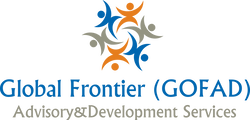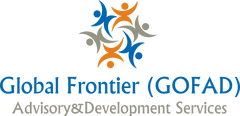|
3/8/2019 Reflecting on #Balance for Better and contemplating an International Day for Gender EqualityRead NowThis blog is being written on International Women’s Day 2019, the theme of which is Balance for Better . It focuses our attention on the movement for women's rights that is multipurpose, multi-sectoral and multinational in scope and activism. It however provides an opportunity to reflect on the origins, aims and future of a movement that is inclusive.
Origins of Women’s Day The origins of Women’s day is identified with the Socialist Party of America which organized a Women's Day on February 28, 1909 in New York. The following year (1910) the International Socialist Woman's Conference suggested that Women's Day be held annually. However it was only after women gained suffrage through the right to vote in political elections in Soviet Russia in 1917, that March 8 became a national holiday there. Claire Zillian explains purple is the color of International Women’s Day , signifying justice and dignity. Women she elaborates have depended on clothing color as a symbol of protest. In the UK and USA white was the official color of the suffrage movement. It was worn on election night 2016 in the USA. Black has been the choice of the #Metoo movement, as well as by females in the film industry at the Emmy awards in 2019. White was also a symbol worn by Democratic women in Congress for President Donald Trumps 2019 state of the union address, in protest against sexual harassment. [Fortune Magazine, March 7, 2019] There have been many variations in the aims and outcomes since International Women’s Day was founded more than a century ago. It became a prominent celebration by the socialist movement and communist countries. It was heralded in the USA in 1910 as 15,000 women marched in New York demanding better working conditions and voting rights. After it was adopted in 1975 by the United Nations, it evolved as a Day for celebrating women’s social, economic and political achievements and calling for gender equality and empowerment. Today, International Women's Day is a public holiday in some countries. In others, it is a celebration of womanhood. In some countries, it is a day of protest. It is largely ignored elsewhere. Sustaining pillars: Gender equality and women’s empowerment In many ways, the aims and aspirations that underscore International Women’s Day are consistent with those issues that confront women and girls throughout the year. It connects with the goals of UN General Assembly (Resolution 54/134) designating November 25 as International Day for the Elimination of Violence Against Women, which also marks the start of the "16 Days of Activism" preceding Human Rights Day on December 10 each year. Its emphasis on gender quality raises awareness of the fact that women around the world are subject to rape, domestic violence and other forms of violence. It was aptly formulated by former UN Secretary General, Ban Ki Moon’s campaign in 2014, UNITE to End Violence against Women.” It also is deeply entrenched in the goal of Women's Empowerment which is a process, not a product. It is about equipping and allowing women to make life-determining decisions; having the capability to make important decisions in their lives; and being able to act on them. These aspects of change however require credible advocates and leaders that could influence institutional responses, mobilize communities for change and champion the empowerment of women and girls. Illustrations through the response to HIV There are so many areas to which prescriptions to achieve gender equality and women’s empowerment may be applied . Among them are the family, household, workplace, schools, communities, religious organizations and sports. Given the recent and greatly encouraging news from the University of London and Imperial College London that an HIV positive man has been functionally cured, it is useful to note the work at the International Partnership for Microbicides, to expand women’s HIV prevention options with new technologies. This means that innovation is front and center of ending the AIDS epidemic. The work of the Partnership demonstrates that gender equality and HIV prevention go hand-in-hand. Today, women bear the brunt of the HIV epidemic and, worldwide, young women ages 15-24 are more than twice as likely to acquire HIV as young men of the same age. In this respect “ gender inequities play a large role in limiting women’s ability to negotiate safe sex, or even select their partners. Condoms, while highly effective, are often not a feasible option for many women”. [Partnership for Microbicides 2019 World AIDS Day Message] The Partnership promotes building smart new ways to help women stay HIV-free and protect their sexual and reproductive health. It also advocates for innovation so that women have a range of tools that fit their needs and circumstances. These include condoms, daily oral pre exposure prophylactic (PrEP), vaginal and rectal microbicides, injectables, implants and vaccines, as well as multipurpose prevention products that prevent both HIV and unintended pregnancy. First Ladies in Africa and the Caribbean as Credible Advocates The Organisation of African First Ladies against HIV/AIDS (OAFLA) founded in 2002 currently includes 37 members. They work to cultivate a spirit of solidarity and the exchange of experiences among African First Ladies. Its mission is to contribute to the health and well-being of children, youth and women through advocacy, resource mobilization and strategic partnerships. Given that HIV in young women ages 15-24 in South Saharan Africa remains an urgent problem, OAFLA has developed an ambitious partnership totaling $385 Million for the DREAMS project committed to help girls to develop into Determined, Resilient, Empowered, AIDS-Free, Mentored and Safe women. This is being organized through parenting, care giver programmes, cash transfers, educational subsidies, combination of socio-economic approaches and interventions to reduce risk of sex partnerships, school based HIV prevention and interventions that empower girls and young women. Its mission is to increase capacity of women leaders to advocate for effective solutions to respond to the ongoing HIV/AIDS epidemic, and act against stigma and discrimination in the fight against HIV/AIDS. For more details see www.dreamspartnership.org The Spouses of CARICOM Leaders Action Network (SCLAN) is a non-governmental organization endorsed by CARICOM Heads of Government at their Inter-Sessional Meeting in Guyana in February 2017. It was formally established in September 2018, with Mrs. Kim Simplis Barrow, Spouse of the Prime Minister of Belize, being elected Chair. SCLAN’s vision is “a Caribbean free from HIV, hepatitis, TB, early pregnancy, and violence, where women and girls know their value and ability” Its mission is aligned with former UN Secretary-General Ban Ki-moon’s “Every Woman, Every Child” and the Global Initiative and the Global Strategy for Women’s, Children’s and Adolescents’ Health (2016-2030). In this regard SCLAN in collaboration with OAFLA is pursuing joint programmes to achieve global solidarity consistent with the theme of 2019 World AIDS Day. In collaboration with Gilead, several national projects have been launched. Jointly with the PANCAP Coordinating Unit, CARICOM Secretariat, SCLAN is “pressing forward for the health and well-being of women, children and adolescents”. The aim is to increase awareness and to stimulate interest, especially among First Ladies to advocate for the development of programmes that will support the safety, physical and psychological well-being of women, children and adolescents around the world. Its Vice Chair, First Lady, Her Excellency Sandra Granger of Guyana is a PANCAP Champion for Change which ensures that within the Caribbean, gender equity is high on the agenda. For more information see www.specialenvoy.bz Both in the case of OALFA and SCLAN there is recognition that gender equity and women’s empowerment require the involvement and engagement of men and boys. Mrs Juliet Holness, spouse of the Prime Minister of Jamaica and Executive Committee member of SCLAN has launched Save our Boys Foundation to respond to the challenge of raising resilient, successful and resourceful boys who become strong, responsible and admirable men. Innovation through joint action with Men Joint action among women and men is an essential pillar of gender equality. While the longest running national celebration of Men's Day is in Malta, where events have occurred since 1994, the stage is set with the International Men's Day (IMD), an annual international event celebrated every year on 19 November. It was inaugurated in New York by Thomas Oaster, February 7, 1992. After a lapse of 7 years the project was reinitialized in Trinidad and Tobago by Dr. Jerome Teelucksingh, Lecturer at the University of the West Indies, St. Augustine, on 19 November 1999 to honour his father's birthday and also to celebrate that date when Trinidad and Tobago's football team had united the country with their endeavours to qualify for the Soccer World Cup in France. Teelucksingh‘s vision has been sustained as more than 80 countries worldwide now celebrate International Men’s Day. Its grass roots activists have promoted International Men’s Day: not just a ‘gendered’ day but one where all issues affecting men and boys can be addressed. Their goal is to remove the negative images and the stigma associated with men in our society. It revolves around six pillars that parallel those of International Women’s Day. They include: promoting men’s and boys health, male role models, gender equality, and family life and humanitarianism. On this International Day as we reflect the meaning of the theme, "Balance for Better ”, we may wish to contemplate retaining the separate celebrations for men and women but work toward a joint International Day for Gender equality. Eddie Greene
5 Comments
Sylvia Piggott
3/8/2019 05:51:43 pm
What an amazing paper! I am simply fascinated
Reply
Sandra Granger
3/10/2019 06:42:49 am
Many thanks,
Reply
Sylvia Dauada
3/10/2019 07:10:50 am
What an amazing paper! I am simply fascinated
Reply
Carol Jacobs
3/11/2019 12:06:22 pm
It is really exciting what you have been able to cover in your blogs and the timing of this most recent one for International Women’s Day was perfect. Cudos to the Web Mistress.
Reply
Klement Jaïdzéka
3/11/2019 12:17:35 pm
Congratulations on this great initiative. I'm very happy to see it finally come to fruition and I'm excited for the positive impact it will have in forming the leaders of tomorrow and facilitating development and capacity building.
Reply
Leave a Reply. |
Details
AuthorEdward and Auriol Greene Directors, GOFAD. Archives
April 2022
Categories |
Global Frontier Site Links |
Contact InformationEmail: [email protected]
Twitter: @GofadGlobal |

 RSS Feed
RSS Feed
